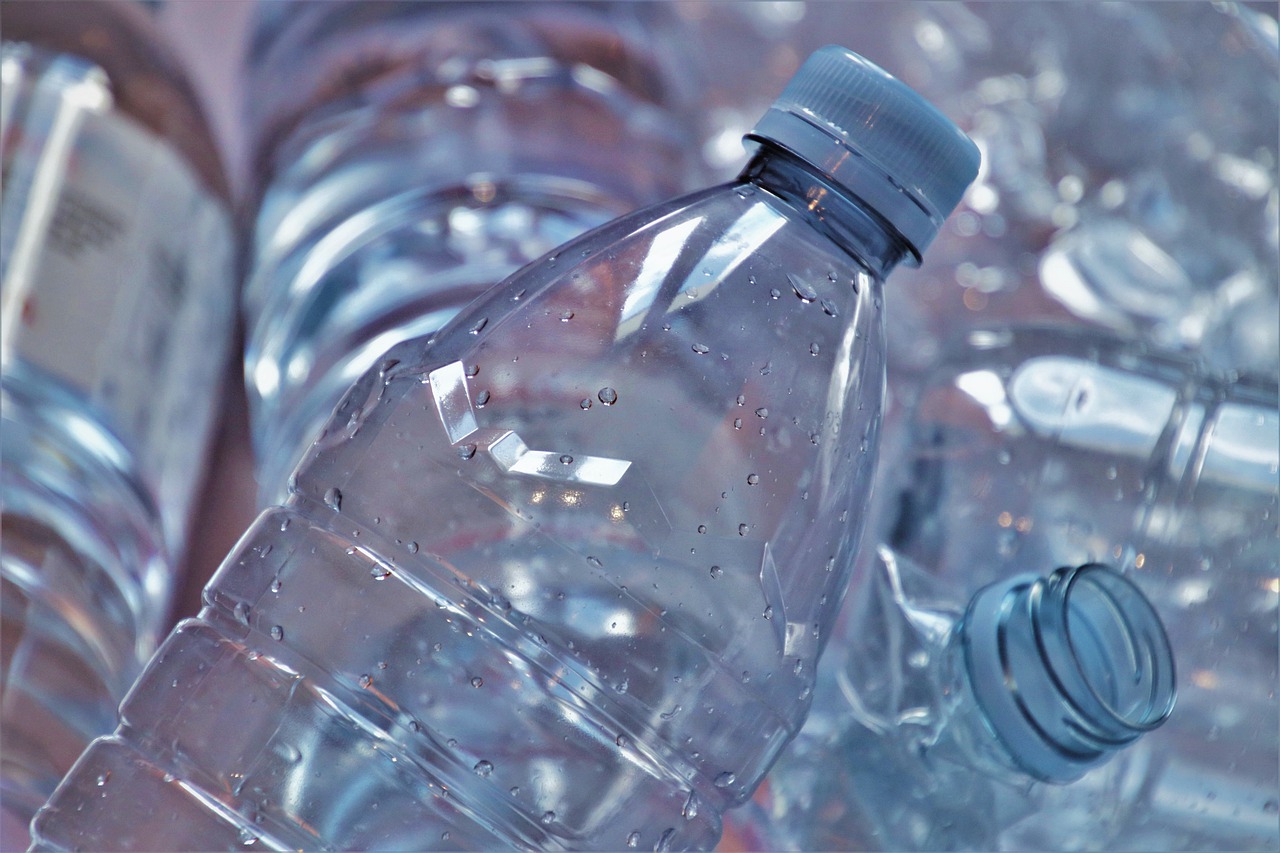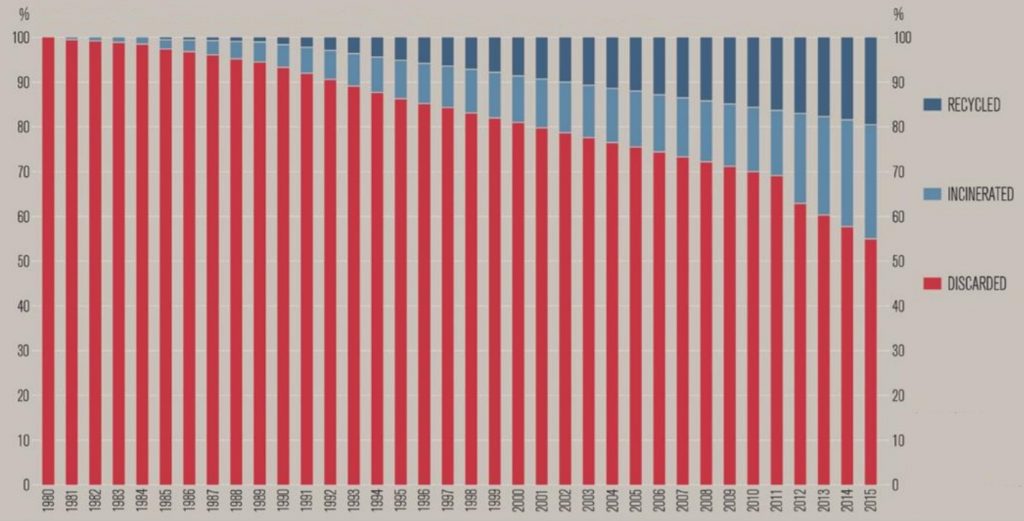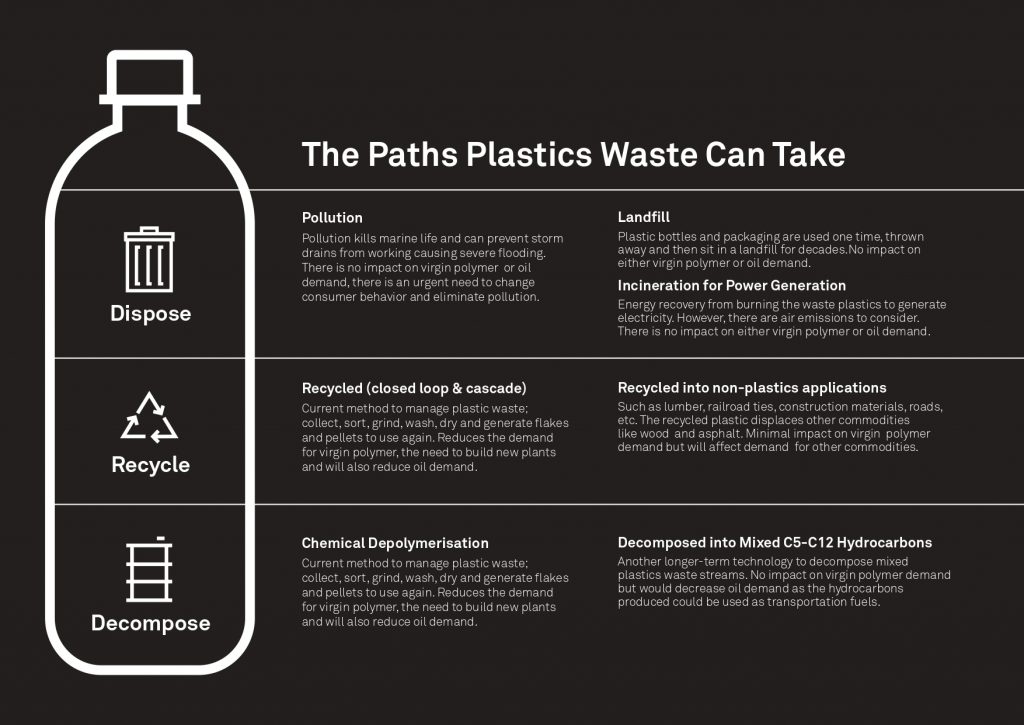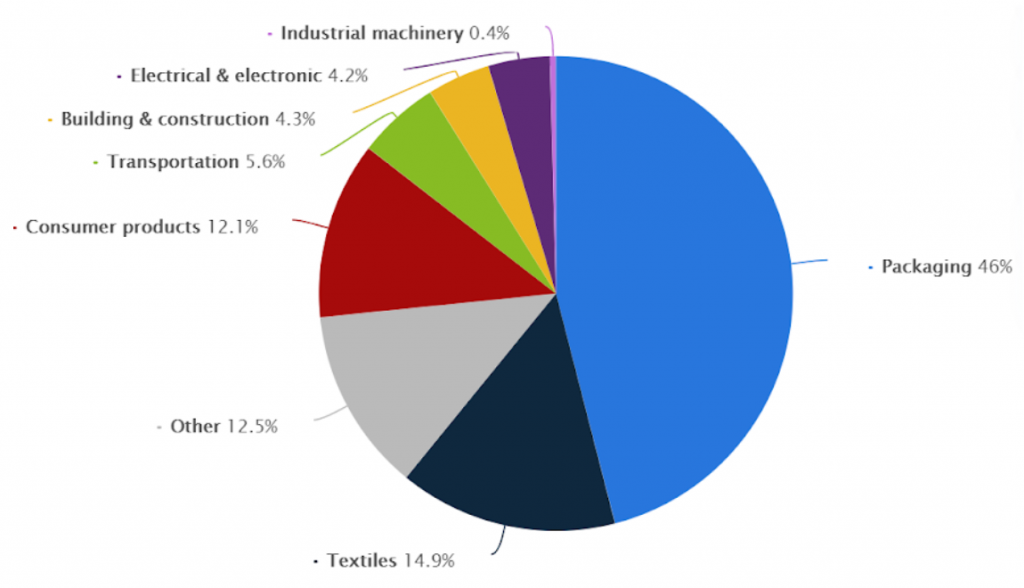
Plastic materials offer exceptional properties such as weightlessness, durability and strength and bring economic benefits that have made them indispensable around the world. Plastics, with their inherent versatility, play an important role in a resource-efficient economy. Thanks to the unique properties of plastics, they can be recycled and used as second life materials several times. With plastic there is no waste.
We talk about the circular economy as a system with no waste and waste becomes resources. Thanks to the 3Rs, the “waste of garbage” is put to an end! Recycling includes reducing and reusing. And with plastic, there is no waste: it can be transformed countless times without sacrificing the aesthetics of the products!
– Silvia Merighi, founder of MSP Group, the broker in the plastic recycling sector
The circular economy
The circular economy aims to recycle and reuse plastic products and avoid recoverable plastic landfilling to bring residual waste close to zero. It is a system where plastic materials constantly flow around a “closed-loop”. Plastic waste recycling maximises resource efficiency and generates value from waste (producing new plastic raw materials, plastic products or energy generation) without leakage into the natural environment. A circular economy brings economic and social benefits as well as reduces plastic pollution and greenhouse gas emissions.
According to the United Nations Environment Program (UNEP), between 1950 and 2015 about 5.8 billion tonnes of plastic waste have been generated around the world. Only 9% of that has been recycled and 12% has been incinerated. From 1950 to 1980, the main practice to treat plastics was the discharge in landfills or the environment and open burning. Graph 1 demonstrates that the global situation for managing plastic waste has improved since 1980. In the 1980s, waste recycling and incineration treatment methods were introduced to combat health and environmental dangers related to unregulated plastic waste. The shares of recycled and incinerated plastic waste increased through time. In 2015 they reached 19% and 25% respectively. However, the biggest share of plastic waste (56%) was landfilled or leaked into the environment in 2015. To achieve the circular economy of plastics, no landfilling is required.
Graph 1 – Estimated percentage of managed plastic waste from 1980 to 2015, in percentile.

From primary plastic to second-life materials
In order to increase the circularity of plastics, it is important to understand the life cycle of plastic products.
Life Cycle of plastic products
The first phase is the extraction of raw materials. In fact, more than 90% of raw plastic is derived from oil and natural gas. Then, petrochemical factories synthesize fossil fuels into polymers. In the next phase, raw plastic is sent to plastic manufacturers to convert into plastic products. Then, these products are distributed to the private and industrial end-users. The use phase of plastic products varies significantly. Some of them have a short life span lasting one day (for instance, plastic bags and disposable tableware) or long-lasting about 50 years (some building and construction materials). This period defines when plastic products will potentially become waste. Finally, they are disposed of after use.
Three recycling methods
There are three most common methods for plastic recycling: incineration with energy recovery, chemical and mechanical recycling technologies.

Incineration process
Plastic waste can be incinerated to recover energy that can be used to generate heat, steam or electricity. In this article you can read what are the environmental impacts of incineration: https://ourworldindata.org/faq-on-plastics#what-are-the-environmental-impacts-of-incineration
Chemical process
Chemical recycling technology corresponds to breaking the plastics down at a molecular level, converting them into monomers that can be used for the production of new chemicals and raw plastic.
“So far, the stumbling block has been the large amount of energy it requires” BBC says. “This, combined with the volatile price of crude oil, sometimes makes it cheaper to produce new plastic products than to recycle existing plastic.”
In 2020, a report by the Global Alliance for Incinerator Alternatives (Gaia), concluded that chemical recycling was not a viable solution to the plastic problem, especially at the pace and scale needed.
At the same time, it is billed as a way to “close the loop” and enable total recovery of plastic waste.
Mechanical process
Mechanical recycling is the reprocessing of plastic waste in order to produce new plastic products. According to EuropePlastics, the following steps comprise the mechanical plastic recycling process:
- Collection of the plastic products that have reached their end-of-life phase;
- Sorting plastic waste by type of polymer;
- Shredding plastics into smaller pieces;
- Washing scrap plastic to remove dust and dirt;
- Second sorting and controlling plastics before melting and extrusion;
- Conversion of scrap plastic into homogenous pellets used for new products manufacturing.
Each year, only 20% of plastics re-enter the life cycle, and huge amounts of plastics end up in landfills and natural habitats.
Plastics in different sectors
The demand for plastics varies among different sectors. However, packaging and building & construction are the largest end-use markets. According to UNEP, they account for more than 50% of plastic manufacturing and use globally. Also, a big amount of primary plastic production is consumed by textiles, consumer and institutional products and transportation sectors.
Plastic products in the packaging sector are usually used for a short time. It is the main sector of plastic waste generation. In 2018 it accounted for 46% of global plastic waste (Graph 2). While only 4.3% of plastic waste is generated by the building & construction sector. It requires durable and high-performance products that have a longer life span. In general, the longer the lifetime of a plastic product, the higher its contribution to resource efficiency.
Graph 2 – Distribution of plastic waste generation by sector worldwide in 2018, in percentile.

According to PlasticsEurope, 2019, in Europe (EU28 + Norway and Switzerland) about 4 million tonnes of plastic recyclates were used in new products. Most of them were used in the building and construction (46%), packaging (24%) and agriculture (13%) sectors.
Sectors representing for plastic waste:
- Packaging – 46%
- Textiles – 14.9%
- Other – 12.5%
- Consumer products -12.1%
- Transportation – 5.6%
- Building and construction – 4.3%
- Electrical and electronic – 4.2%
- Industrial machinery -0.4%




